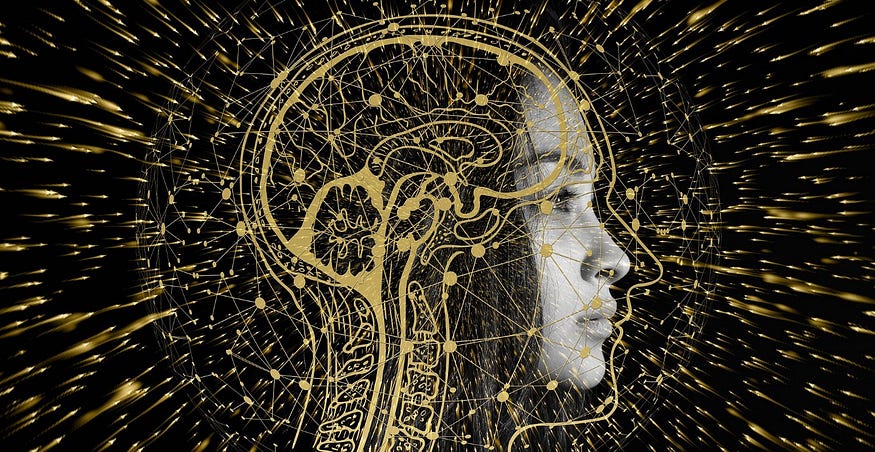
Neural Circuit Policies: Mimicking Biological models in AI for better reliability and interpretability.
Last Updated on July 26, 2023 by Editorial Team
Author(s): Rakesh Acharya
Originally published on Towards AI.
Technology
Neural Circuit Policies: Mimicking Biological models in AI for better reliability and interpretability.
An attempt to understand NCPs and how threadworms inspired a group of researchers from MIT, TU Wien, and IST Austria to build a novel AI system.

Nature-inspired Deep Learning
Even in this age of advanced technology, where we are at a stage of human-developed technology merging with human intelligence, nature always proves that there is room for improvement. After 3.5 billion years of natural selection and species evolution, mother nature has devised innovative solutions and inspire bioscientists, engineers, and inventors. This time it is AI.
“For years, we have been investigating what we can learn from nature to improve deep learning,” says Prof. Radu Grosu, head of the research group “Cyber-Physical Systems” at TU Wien.
Artificial Neural Networks contain many individual cells that communicate with each other, similar to the brains of living organisms. This communication happens in the form of signals. When a cell is active it sends a signal to other cells. Depending on the input received by the cells, it might or might not get activated. This way the system is adjusted to complete a specific task. The way in which one cell influences another determines the behavior of the system. Now depending on the task in hand, these parameters are adjusted to perform a specific task. From identifying cats in an image to cracking the protein structure for a vaccine.
Now depending on how complex the task is, the structure of ANN increases and gets deeper. Even Though we can do it with the enormous computing power that we have, the question that arises now is can this task be done with a small number of neurons ??
It seems that there is an answer and that is Neural Circuit Policies(NCP).NCP is a new architecture inspired by biological neurons, paving the path to smaller models that can handle complex tasks. This simplicity makes it more robust and interpretable. The team behind this new architecture says that the system has advantages compared to previous models: It is better at handling noisy inputs and its simplicity makes it better interpretable.
Threadworms in Self Driving cars

The most interesting part of this research is, it is inspired by nature around us. Most specifically, researchers from MIT, TU Wien, and IST Austria based this new AI system on threadworms (C.elegans) . This system can control a vehicle with fewer neurons.
“The nematode C. elegans, for example, lives its life with an amazingly small number of neurons, and still shows interesting behavioral patterns. This is due to the efficient and harmonious way the nematode’s nervous system processes information.”
The wiring diagram of threadworms exhibits a specific topology with sparse networks, effective information propagation, requiring a small number of neurons with hierarchical temporal dynamics. According to the researchers, the wiring diagram of roundworms achieves a sparsity of around 90%, with predominantly feedforward connections from sensors to intermediate neurons, highly recurrent connections among inter-neurons and command neurons, and feedforward connections from command neurons to motor neurons. At the core, NCPs possess a nonlinear time-varying synaptic transmission mechanism that improves their expressive power in modeling time series, compared with their deep learning counterparts. The foundational neural building blocks of NCPs are called liquid time constant (LTC) networks.
This complete NCP network is 63 times smaller than the convolution neural network that established the state-of-the-art of end-to-end driving. Also, the control network of NCP is 970 times sparser than that of Long Short Term Memory (LSTM) and 241 times sparser than that of CT-RNN.
Autonomous lane keeping to test the system
In full-stack Autonomous driving systems, one of the components is Autonomous Lane Keeping that keeps the self-driving cars in their lane. The neural network receives input from cameras and steers the car either to left or right depending on the lane. To get an in-depth understanding of lane detection you can visit this.
Now, such complex tasks these days require millions of parameters, but this NCP-based system uses only 75000 parameters reducing the magnitude by two orders. The control part of the system (called neural circuit policy, or NCP), which translates the data from the perception module into a steering command, only consists of 19 neurons.
“It only processes the visual data to extract structural features from incoming pixels. It has nothing to do with the actual steering of the vehicle.” This network decides which parts of the camera image are interesting and important, and then passes signals to the crucial part of the network — a “control system” that then steers the vehicle.
Robustness, Interpretability, and much more
As a novel neural model and architecture NCPs are considered robust to noisy inputs and achieve interpretability that is almost impossible with larger deep learning models. When researchers provided perturbed input images, while other deep neural networks consider it as an insurmountable problem, NCPs demonstrated strong resistance to this. Coming to interpretability, the simpler structure and fewer neurons makes it easy to investigate the neural process flow. This gives us an opportunity to deduce what the network focuses on while driving. Researchers found that the network focuses on specific parts of the image, a unique behavior among AI systems.
Moreover, with such sparse systems, every single cell at a particular decision can be identified and observed. This opens a new door to understanding each and every cell and interpreting their function in the whole system.
NCPs for new developments in AI

“Inspired by nature, we developed new mathematical models of neurons and synapses,” says Prof. Thomas Henzinger, president of IST Austria.
With robustness and interpretability as major advantages, NCPs also open up the possibility to reduce training time and implement AI in simple systems. The principles of computation in biological systems can become a great resource for creating high-performance interpretable AI.
Join thousands of data leaders on the AI newsletter. Join over 80,000 subscribers and keep up to date with the latest developments in AI. From research to projects and ideas. If you are building an AI startup, an AI-related product, or a service, we invite you to consider becoming a sponsor.
Published via Towards AI
Take our 90+ lesson From Beginner to Advanced LLM Developer Certification: From choosing a project to deploying a working product this is the most comprehensive and practical LLM course out there!
Towards AI has published Building LLMs for Production—our 470+ page guide to mastering LLMs with practical projects and expert insights!

Discover Your Dream AI Career at Towards AI Jobs
Towards AI has built a jobs board tailored specifically to Machine Learning and Data Science Jobs and Skills. Our software searches for live AI jobs each hour, labels and categorises them and makes them easily searchable. Explore over 40,000 live jobs today with Towards AI Jobs!
Note: Content contains the views of the contributing authors and not Towards AI.














